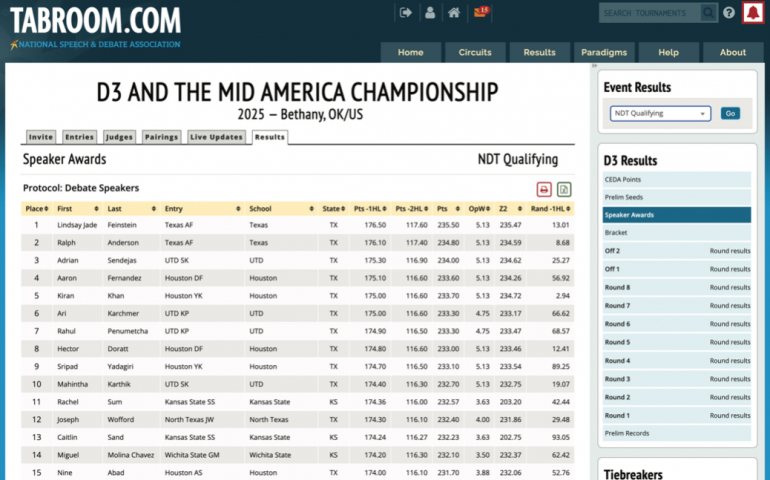This past weekend, debaters from District Three of the policy debate circuit–including Oklahoma, Louisiana, Arkansas, Texas, Kansas, and Missouri–competed for a chance to attend nationals. District Three is the largest intercollegiate policy debate district in the United States, accounting for 30% of the teams in attendance at the national tournament. The competition featured 26 teams from 16 colleges, with the top 15 advancing to the Gonzaga University national tournament next month.
This event marks a significant milestone for Southern Nazarene University, which has been part of the debate circuit for only four years. Marty Glendinning, debate logistics coordinator, emphasized the importance of this opportunity for SNU. “We are becoming very recognized on the national stage. We’ve traveled to national tournaments and placed really well, such as at the Naval Academy, Georgetown, and Northwestern. So, it’s important for us to take the next step to actually be recognized as a significant program and to have such a prestigious event offered to us to host.”
Organizing the tournament required considerable effort behind the scenes. Olivia Savill, assistant debate coach, played a key role in coordinating logistics, including overseeing the event’s hospitality station, known as “Snacktopia.” She also fielded questions from attendees. Two SNU debaters, Brayden McFerren and Adrien Peterson, also assisted with running the event and guiding people to rooms.
Savill described the two essential groups needed to manage the tournament. The first, Tabroom, handled behind-the-scenes operations, including tabulating debate results, unlocking doors, and addressing emergencies. The second group managed food and the primary gathering space for judges and debaters between rounds.
Sevill states, “What I did was Snacktopia. We put out all of these snacks for free and made sure it looked nice.”
Glendinning also highlighted the support received from SNU’s administration in successfully hosting the tournament on short notice. “We really appreciate the administration’s support. We worked hard with the upper administration, including our conference manager, Cheri Pack, and the cafeteria manager, Christi Jolly. As is typical of the SNU environment, everyone pitched in on such short notice. This opportunity arose when another school’s administration said they couldn’t host it. We had about a month to put this tournament together, and it took the entire SNU community–administrators, staff, and everyone pulling in the same direction–to make it happen.”
The effort appears to have been successful based on feedback from attendees. Glendinning notes this as his final remark, “We had overwhelming success according to the people from the colleges in attendance that I talked to. They are excited and hopeful that we will be able to do this again next year.”
Photo by: Katherine Baker
